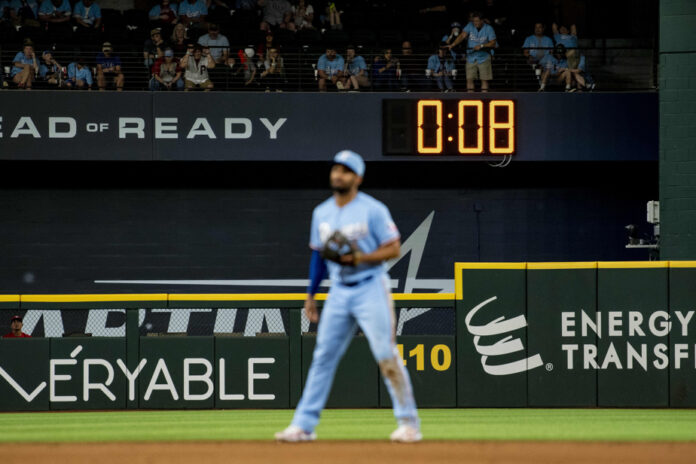(Milwaukee) The dial for timing the time between each pitch may annoy hitters when they come up to bat, but they appreciate it a lot more after they grab their glove and jump downfield on defense.
Admittedly, the rule change adopted this season in order to speed up the progress of a game has caused much ink to flow, particularly regarding the impact on the performance of batters and pitchers, but certain players, as well as managers, believe that this innovation has contributed to the improvement of the defensive game.
The dial in particular — an idea developed to keep fans focused on the game — would play an important role for defensive players.
“I think it helps the defensive game a lot, because it eliminates breaks where you’re trying to entertain yourself,” said Seattle Mariners second baseman Kolten Wong, a two-time Gold Glove winner. You don’t dust your uniform, you move and move and move constantly. I love this new rule. »
The dial that was adopted this season—along with regulations to limit special defenses and other similar measures—gives the pitcher 15 seconds between shots if there are no runners on the trails, and 20 seconds if there is one.
The course of a match has obviously accelerated. The average game length has reached two hours and 40 minutes, similar to what we saw in 1984. Games have averaged at least three hours each season from 2012 to 2022.
This change was expected. But some players, as well as several managers, admitted to being pleasantly surprised at the impact of the dial on defensive play.
Milwaukee Brewers manager Craig Counsell, when asked earlier this season about left fielder Christian Yelich’s improved defensive play, made no secret that he considers the pitch clock dial a factor. crucial at this level. After finding himself among the 10 worst left fielders at Under-5 “Outs Above Average” (OAA), Yelich is now third with 3 OAA, according to Baseball Savant.
“I didn’t pay attention to it, but I think it’s easier to play defense now that the pace of the game is controlled,” Counsell said. Good for defensive players. I think the hitters are still reluctant, to be honest with you. And pitchers hate that. But I think it’s good for defensive players. »
Counsell said the long pauses between pitches in previous seasons sometimes made it difficult for players to stay focused on the game.
“It’s still your job, but (the slow pace) made it very difficult, especially for the outfielders,” Counsell said.
Arizona Diamondbacks first baseman Christian Walker believes it has also affected players’ infield play.
“When you’ve been there for 15 or 20 minutes and suddenly a ground ball is heading your way, I know it’s been a challenge in the past in the long runs to stay focused on the game,” he mentioned. .
It is difficult to demonstrate or invalidate, with supporting figures, these theories. The Major League defensive play success rate was 98.6% as of Tuesday, the highest in Major League Baseball history, but that may not be the most reliable statistic.
This rate has been steadily increasing for decades, in particular due to the improvement of playing conditions on the field and equipment, and it reached 98.5% last year. This statistic is also based on the subjective decisions of the official scorers, and does not take into account the movements made by the defensive players.
It is also very difficult to identify trends in forward statistics on defense since the number of special infield defenses has been limited between the 2022 and 2023 seasons.
Which means that you have to rely on your intuition to determine the evolution of the situation.















